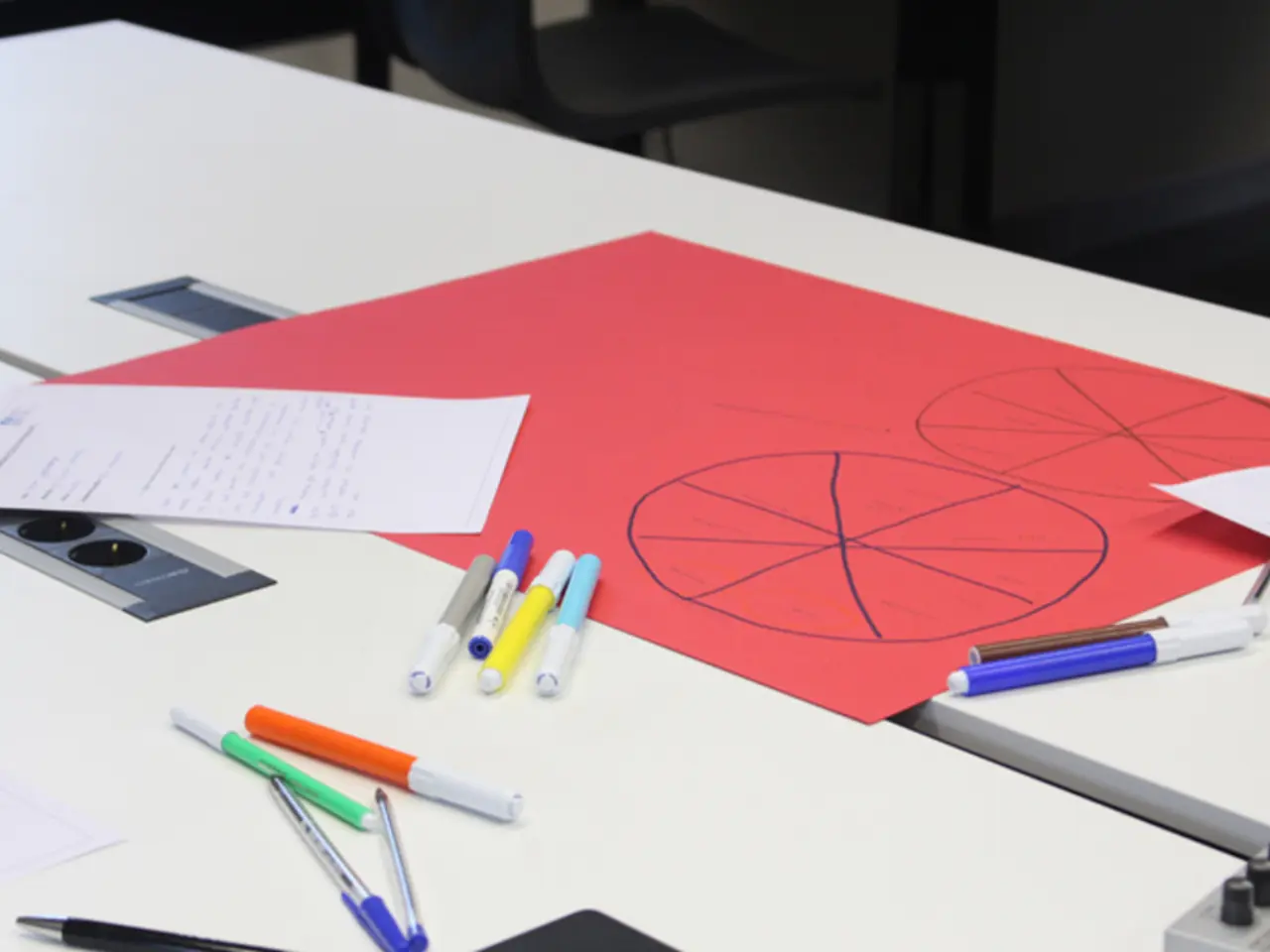Strategies for Crafting Examinations Resistant to Artificial Intelligence Intrusions
Designing AI-Resistant Assessments for Deep Learning
In the modern educational landscape, the rise of AI tools has raised concerns about the potential for automated responses to replace human creativity and critical thinking. To combat this, educators are turning to AI-resistant assessments that not only promote critical thinking and deep learning but also maintain academic integrity.
One approach to designing such assessments is making thinking visible. This can be achieved through formative assessments that require immediate, individual responses during class. For example, using mini-whiteboards or real-time digital tools can capture in-the-moment student understanding, reducing the chance to rely on AI for answers.
Another strategy is flipping project workflows. By having students conduct initial research independently but complete synthesis, analysis, and creation during supervised sessions or discussions, opportunities to outsource critical thinking to AI are limited.
Encouraging critical dialogue and metacognition is also crucial. This can be done by asking students to explain their problem-solving process, reflect on their AI usage choices, and participate in classroom debates evaluating multiple AI-generated solutions.
Assessments that value process over product are also effective. These can take the form of portfolios, project journals, or recorded “thinking aloud” tasks, which foster engagement and discourage shortcutting through AI-generated final outputs.
Real-time problem-solving scenarios, project-based assessments, and collaborative evaluations are additional strategies that resist AI's static generated responses and promote deep learning skills.
Moreover, incorporating oral exams, either uniformly or randomly, can assess student presentation skills as well as subject matter knowledge. Self-recorded videos can be used in any course format, including asynchronous ones.
Breaking down complex tasks into smaller steps is another strategy. For instance, a history assignment on the American Revolution might involve students submitting a proposal, bibliography, outline, first draft, and final draft, with assessments at each stage.
Incorporating multiple modes of expression in assessments can minimize the use of AI-generated responses. For example, in a creative writing unit, students could be asked to develop a story that includes visual representations of key scenes or characters from their story.
AI-resistant assignments in history might involve going to local archives, interviewing elders in the community, or researching local newspapers. These tasks are difficult for AI tools to replicate, promoting deep learning and critical thinking.
Designing AI-resistant assessments promotes critical thinking, creativity, and deep engagement. While it may not work in all academic areas, the approaches outlined above are effective in enhancing student learning. It's important to provide clear guidelines for each assignment regarding the use of generative AI tools to ensure academic integrity.
Overall, effective AI-resistant assessments combine technology, pedagogy, and policy by integrating synchronous interactive components, emphasizing higher-order cognition, embedding metacognitive reflection, and rewarding learning processes. This multifaceted approach supports academic integrity while leveraging AI’s potential to deepen learning.
[1] Hund, J. (2020). The Future of Assessment: Redefining Learning in the Digital Age. John Wiley & Sons.
[2] Knezek, R. M., & Christensen, J. A. (2017). The impact of artificial intelligence on education: A review of the literature. Journal of Research on Technology in Education, 49(3), 292-313.
[3] Khoo, I., & Looi, C. K. (2018). AI-resistant assessment: A review of the literature. Journal of Educational Technology Development and Exchange, 11(1), 1-20.
[4] Kozma, R. B. (2018). The role of technology in education: A historical perspective. Journal of Educational Technology Development and Exchange, 11(1), 21-42.
[5] Tinati, M., & Cummins, M. (2020). Artificial intelligence and education: A systematic literature review of the ethical and social implications. Journal of Educational Technology Development and Exchange, 13(1), 1-22.
- Instead of relying on AI for answers, educators can use mini-whiteboards or real-time digital tools to capture a student's immediate, individual responses, promoting deep learning and critical thinking.
- To minimize AI's influence on project workflows, students can conduct initial research independently and complete synthesis, analysis, and creation during supervised sessions or discussions, reducing opportunities to outsource critical thinking to AI.
- Encouraging students to explain their problem-solving process, reflect on their AI usage choices, and participate in classroom debates evaluating multiple AI-generated solutions can foster critical dialogue and metacognition.
- Assessments that value process over product, such as portfolios, project journals, or recorded “thinking aloud” tasks, foster engagement and discourage shortcutting through AI-generated final outputs.




